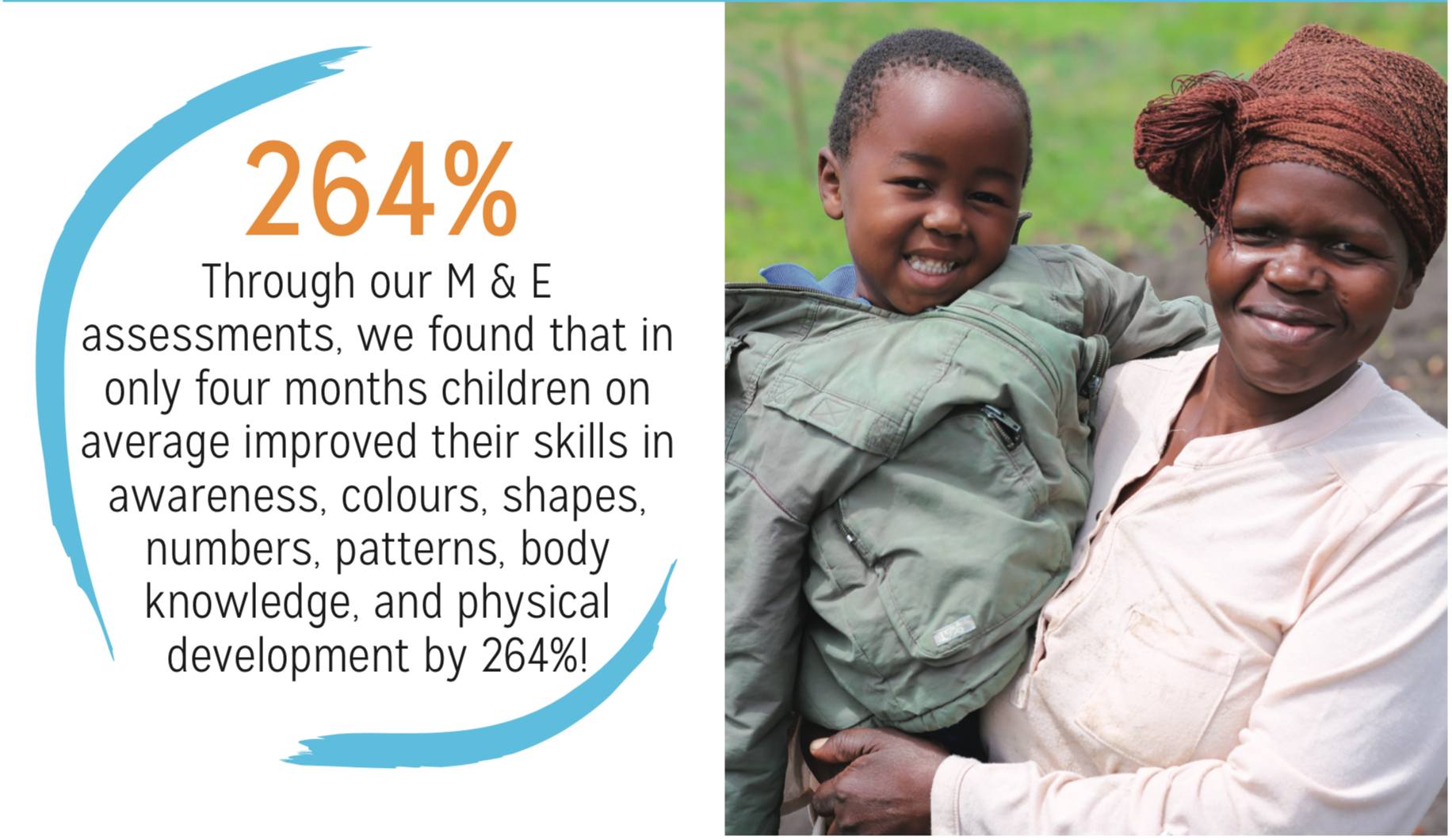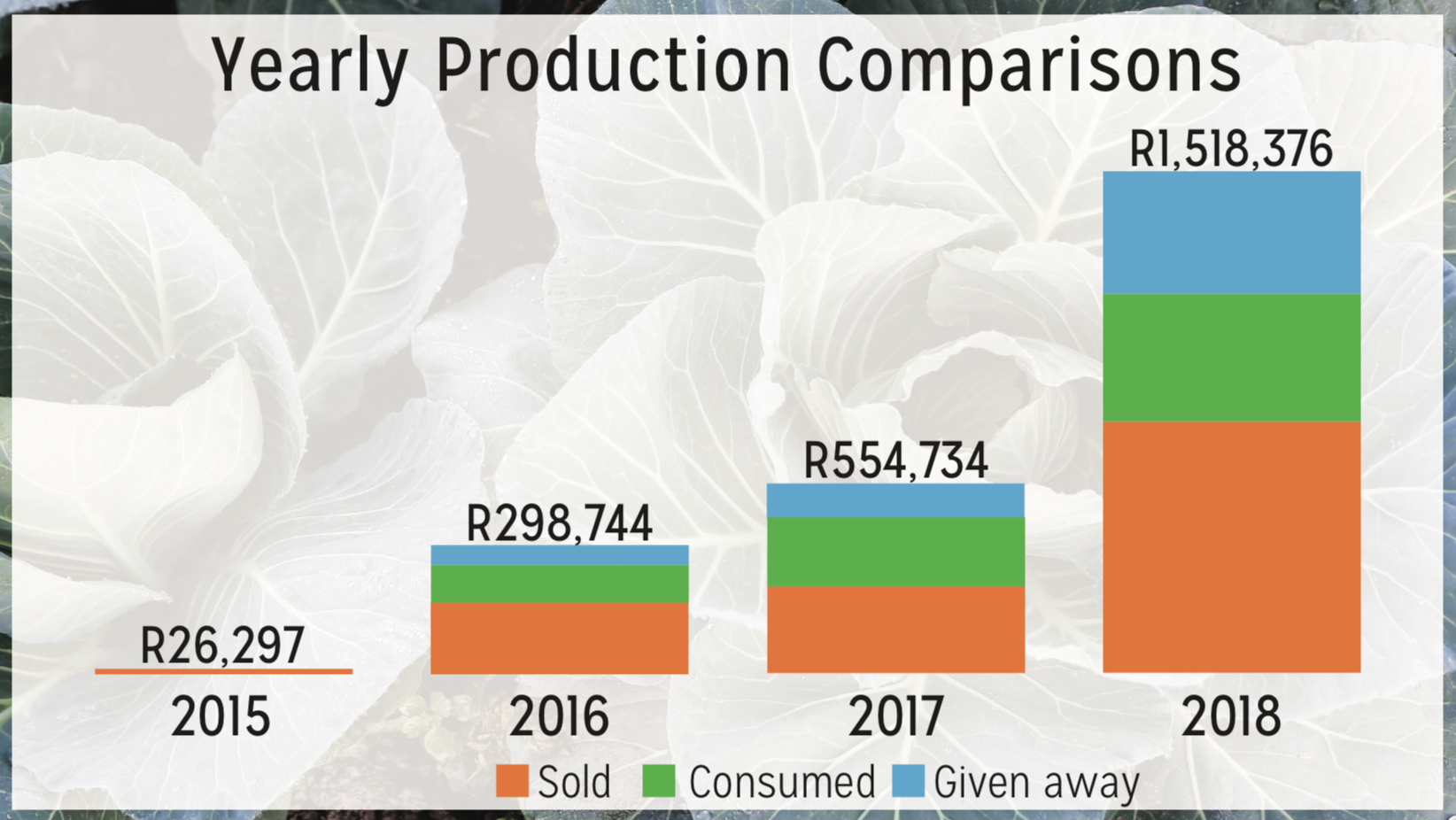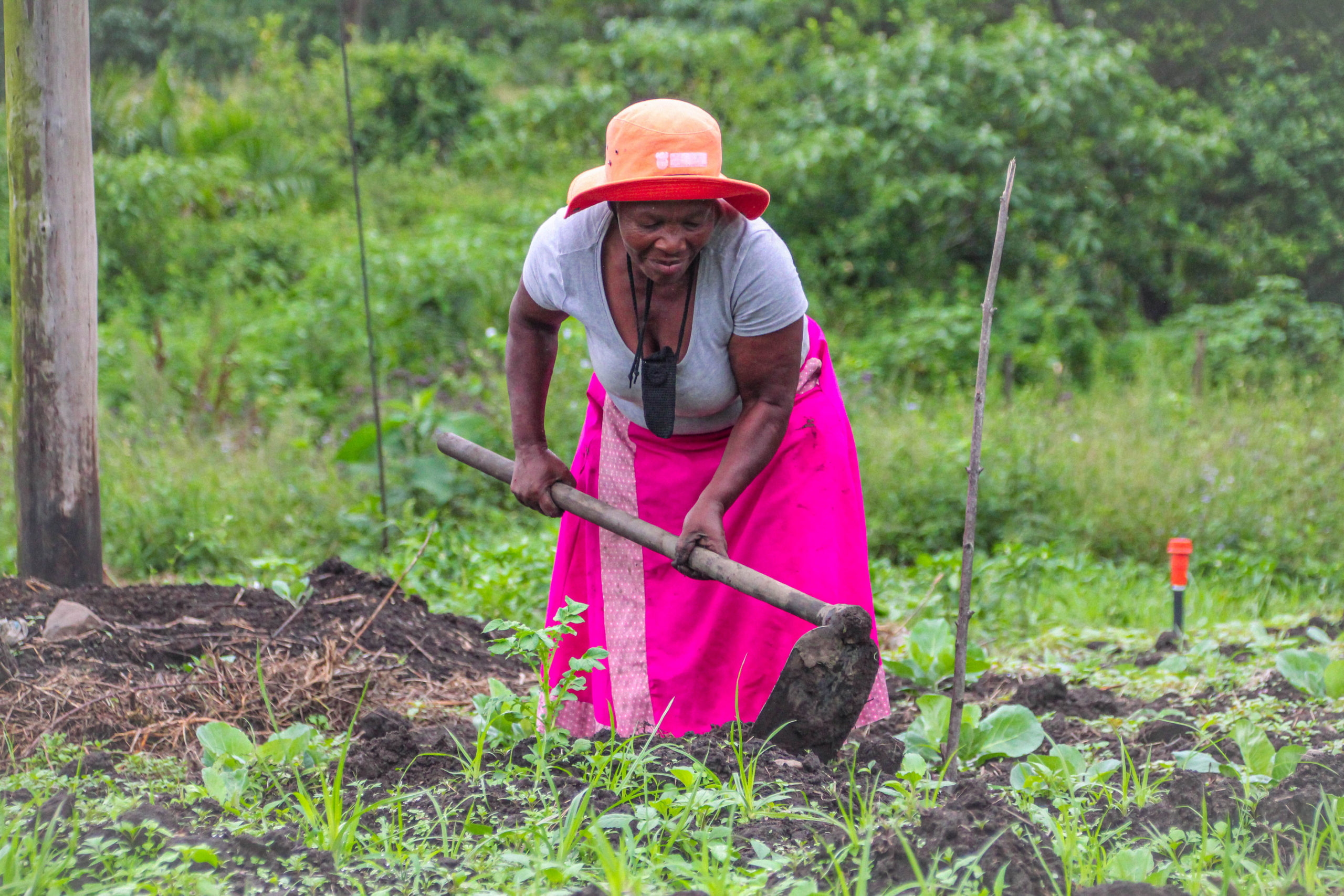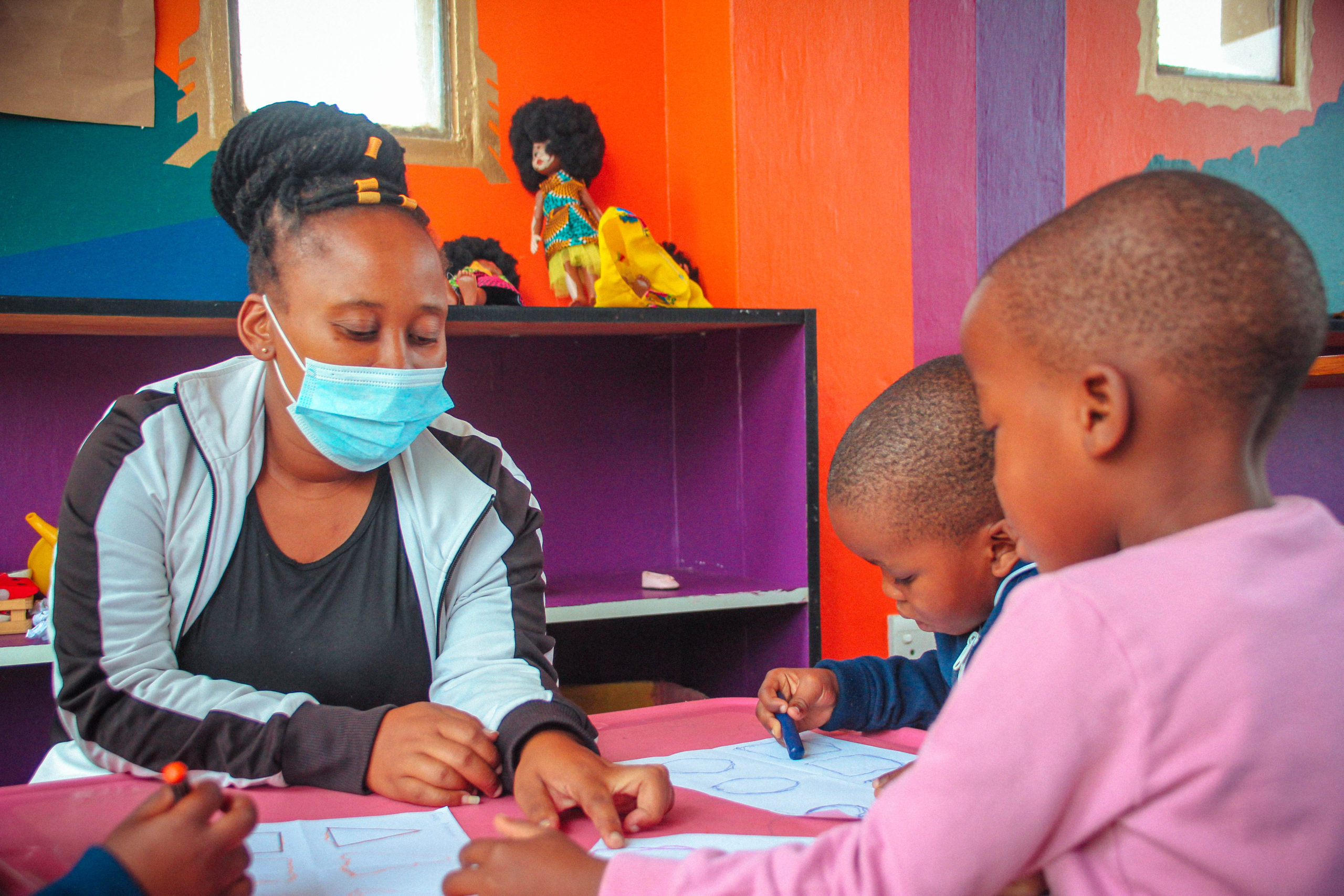“We all have an end goal like, ‘I want to change the world’, but that doesn’t just happen, there’s a lot of things in between.” – Daniel Moody, Head of Operational Development
Since 2008, we have been ‘Empowering communities to create positive change’. It’s a big goal, a good goal, and it doesn’t happen by good intentions alone. It takes research, strategy, and a lot of hard work by a community of dedicated individuals. But what does positive change look like? How do we know if we achieved it? Answering these questions is essential to operating a non-profit with integrity and impact. In order to understand the value and impact of the work we do at Thanda, we have a team dedicated to Monitoring and Evaluation (M&E).



Our M&E Team Daniel, Snethemba, and Khanyi
What is M&E?
M&E is a knowledge building tool that comes in two parts; monitoring and evaluation. Monitoring is the process of capturing data and evaluation is the process of analysing what that data tells us about our organisation. Through monitoring, we ask questions that capture data about our programmes. “If we develop the right indicators, we can get to the heart of the programme,” says Daniel Moody, Head of Operational Development at Thanda. “For example, we have Game-changing skills in ECD and After-school that we want the children to obtain, so they attend classes and we assess them on the material and curriculum,” says Impact Manager, Snethemba Dube. At the beginning of every year, we take a baseline of each child that tells us on a defined scale how proficient the child is at skills like empathy, literacy, and critical-thinking. “A baseline is used to get a picture of the situation on the ground before the intervention takes places,” says Daniel. At the end of the year, the children are assessed again, giving us a look at their progression. “Are we improving the children from their baseline? By how much,” asks Snethemba. We have monitoring systems like these across all of our programmes, tailored to the purpose of the programme. “In our Organic Farming Programme, we set goals and we bring solutions. Our Farming Facilitators go to the farms every day to input the solutions. To know if the solutions work, we do M&E. Are we increasing production? Are we lessening food security? If not, we ask ourselves what can we do differently,” says Snethemba.
 Fun Foundations Skill Improvement in 2018
Fun Foundations Skill Improvement in 2018
But quantitative data is only a snapshot of the program at a particular time. “In an ideal world,” says Daniel, “We take quantitative data and qualitative data and marry them together. Quantitative data shows us what is happening, then we conduct interviews to see why it’s happening.” If we see that a farmer’s production rate has soared over the last year, we want to be able to identify what intervention led to that increase. “There are things that we can’t learn from the data alone, we must do interviews to get the full story,” says Snethemba. By combining the numbers captured from our programmes and the experiences of the individuals in the program, we can see the full picture of Thanda’s impact.
 Thanda’s M&E Process
Thanda’s M&E Process
Once we have the data, both qualitative and quantitative, we can then move to the evaluation part of M&E. In the evaluation stage, we ask questions such as: Have we met our goals? What went right or wrong? How can we adjust? Based on the answers, we make plans for how to be better in the future. “There’s always room for improvement,” says Daniel, “M&E helps identify where the improvement is needed.” A non-profit’s growth should always be a learning process. By evaluating our programmes with community members, staff, and partners, we learn how to better operate our programmes to achieve our goals.
Why is M&E important for Non-profits?
Without exception, every non-profit should be doing Monitoring and Evaluation. How can an organisation that wants to do good be successful if it can’t show that it has actually done good? “We don’t just assume without evidence that Thanda is a good thing, we use M&E to get a deeper understanding,” says Daniel, “Some people find M&E intimidating. Maybe it’s the numbers or the systems, but it’s actually very simple. It’s setting your intentions and following through.” But there are two primary reasons every non-profit should be doing M&E; one is for internal accountability and the other is for external credibility.
Internal Accountability
“With M&E, you should be able to inform your organisation how well or badly its doing,” says Daniel. On the macro level, by setting measurable goals and monitoring the progress towards those goals, an organisation can hold itself accountable. On the micro-level, M&E helps to improve programmes so that the goals can be more readily met. For example, Facilitators in our After-school Programme use the baseline evaluation of their participants’ skills to see where the strengths and weaknesses of the class lie. Based on this information, the Facilitator shapes the curriculum to the specific needs of their class. This type of child-centric instruction allows for greater impact than is possible without the M&E that goes into understanding the children’s needs. In Organic Farming, M&E helps farmers be accountable to themselves. “For certain farmers that had been in the programme awhile, we were able to show them a historical analysis of their progress,” Daniel says, “We asked them, ‘Are you happy? Do you want more? What’s your strategy?’” This empowered the farmers with knowledge necessary for self-development, enabling them to make their own production goals for 2018. The farmers were able to use the production data from 2018 to evaluate last year’s strategy and create a better plan for this year.

Overall Organic Farming Production Comparisons Since 2015
External Credibility
“M&E is not only important for Thanda, but it’s important to our funders and donors,” says Snethemba, “If they give us money to change behaviour and develop skills, surely they want to see the results.” It’s all about integrity and doing what we say we will do. “For funders that invest in us, just like the business world, they are looking for a return on investment, in this case, a social return on investment,” says Daniel, “As a stipulation of that investment, we set targets together as a way to hold each other accountable and set a long-term strategy.” The same holds true for a non-profit’s beneficiaries and community stakeholders. They invest their time, their trust, and often their resources in the organisation. M&E shows the value of a non-profit’s programmes to the beneficiaries, allowing them to see their return on investment. Did you do what you promised? Did you put your resources where you said you would? It’s these factors that give a non-profit legitimacy and longevity.
Thanda’s Impact
M&E is absolutely vital to a non-profit’s success, and at Thanda, we take it very seriously. “We put so much effort into our M&E. We even do assessments that may not be directly relevant to the programme, but we try and see what we can learn anyway. We want to capture as much as possible and we aren’t afraid to gather everything,” says Daniel. Every year, we take the data we have accumulated and break it down in our Impact Report. See how we did in 2018 at https://thanda.org/our-impact/





